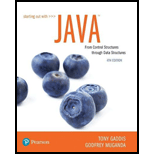
Two-dimensional array:
A two dimensional array is also called as a multi-dimensional array; a multidimensional array is that all the identical arrays are put together into a single array.
- This is useful for storing same type of multiple sets of data in same place.
- The main advantage is that one-dimensional array can hold only one set of value, whereas, two-dimensional array can hold multiple sets of data in the form of rows and columns.
- The structure of a multi-dimensional array is lookalike a table (that is combination of rows and columns); it contains same type of columns.
- The first size declarator in the two-dimensional array represents row and the second size declarator represents column.
- The two dimensional array can have multiple length fields, which holds the number of rows.
- Each row in the two dimensional array has a length field which holds the number of columns.
Syntax:
The syntax of two dimensional arrays is as follows:
datatype array_name [number_of_rows][number_of_columns];
Explanation of Solution
b. Number of columns in the array:
Syntax:
The syntax of two dimensional arrays is as follows:
datatype array_name [number_of_rows][number_of_columns];
Explanation of Solution
c. Number of elements in the array:
Syntax:
The syntax of two dimensional arrays is as follows:
datatype array_name [number_of_rows][number_of_columns];
Given array definition:
double[][] sales = new double[8][10];
...
Explanation of Solution
d. Statement that stores a number in the last column of the last row in the array:
Syntax:
The syntax of two dimensional arrays is as follows:
datatype array_name [number_of_rows][number_of_columns];
Given array definition:
double[][] sales = new double[8][10];
There are 8 rows and 10 columns in the given two-dimensional array.
Index type of an array:
The index type of an array is an integer. An integer is a number without the fractional or decimal part...
Want to see the full answer?
Check out a sample textbook solution
Chapter 7 Solutions
EBK STARTING OUT W/JAVA:...DATA...
- "Do not use AI tools. Solve the problem by hand on paper only and upload a photo of your handwritten solution."arrow_forward"Do not use AI tools. Solve the problem by hand on paper only and upload a photo of your handwritten solution."arrow_forward"Do not use AI tools. Solve the problem by hand on paper only and upload a photo of your handwritten solution."arrow_forward
- "Do not use AI tools. Solve the problem by hand on paper only and upload a photo of your handwritten solution."arrow_forwardSolve this "Do not use AI tools. Solve the problem by hand on paper only and upload a photo of your handwritten solution."arrow_forward"Do not use AI tools. Solve the problem by hand on paper only and upload a photo of your handwritten solution."arrow_forward
- "Do not use AI tools. Solve the problem by hand on paper only and upload a photo of your handwritten solution."arrow_forwardSpecifications: Part-1Part-1: DescriptionIn this part of the lab you will build a single operation ALU. This ALU will implement a bitwise left rotation. Forthis lab assignment you are not allowed to use Digital's Arithmetic components.IF YOU ARE FOUND USING THEM, YOU WILL RECEIVE A ZERO FOR LAB2!The ALU you will be implementing consists of two 4-bit inputs (named inA and inB) and one 4-bit output (named out). Your ALU must rotate the bits in inA by the amount given by inB (i.e. 0-15).Part-1: User InterfaceYou are provided an interface file lab2_part1.dig; start Part-1 from this file.NOTE: You are not permitted to edit the content inside the dotted lines rectangle. Part-1: ExampleIn the figure above, the input values that we have selected to test are inA = {inA_3, inA_2, inA_1, inA_0} = {0, 1, 0,0} and inB = {inB_3, inB_2, inB_1, inB_0} = {0, 0, 1, 0}. Therefore, we must rotate the bus 0100 bitwise left by00102, or 2 in base 10, to get {0, 0, 0, 1}. Please note that a rotation left is…arrow_forwardSolve this "Do not use AI tools. Solve the problem by hand on paper only and upload a photo of your handwritten solution."arrow_forward
- Solve this "Do not use AI tools. Solve the problem by hand on paper only and upload a photo of your handwritten solution."arrow_forward"Do not use AI tools. Solve the problem by hand on paper only and upload a photo of your handwritten solution."arrow_forwardSolve this "Do not use AI tools. Solve the problem by hand on paper only and upload a photo of your handwritten solution."arrow_forward
 EBK JAVA PROGRAMMINGComputer ScienceISBN:9781337671385Author:FARRELLPublisher:CENGAGE LEARNING - CONSIGNMENT
EBK JAVA PROGRAMMINGComputer ScienceISBN:9781337671385Author:FARRELLPublisher:CENGAGE LEARNING - CONSIGNMENT Microsoft Visual C#Computer ScienceISBN:9781337102100Author:Joyce, Farrell.Publisher:Cengage Learning,
Microsoft Visual C#Computer ScienceISBN:9781337102100Author:Joyce, Farrell.Publisher:Cengage Learning, Programming with Microsoft Visual Basic 2017Computer ScienceISBN:9781337102124Author:Diane ZakPublisher:Cengage Learning
Programming with Microsoft Visual Basic 2017Computer ScienceISBN:9781337102124Author:Diane ZakPublisher:Cengage Learning- Programming Logic & Design ComprehensiveComputer ScienceISBN:9781337669405Author:FARRELLPublisher:Cengage
 C++ for Engineers and ScientistsComputer ScienceISBN:9781133187844Author:Bronson, Gary J.Publisher:Course Technology Ptr
C++ for Engineers and ScientistsComputer ScienceISBN:9781133187844Author:Bronson, Gary J.Publisher:Course Technology Ptr C++ Programming: From Problem Analysis to Program...Computer ScienceISBN:9781337102087Author:D. S. MalikPublisher:Cengage Learning
C++ Programming: From Problem Analysis to Program...Computer ScienceISBN:9781337102087Author:D. S. MalikPublisher:Cengage Learning





